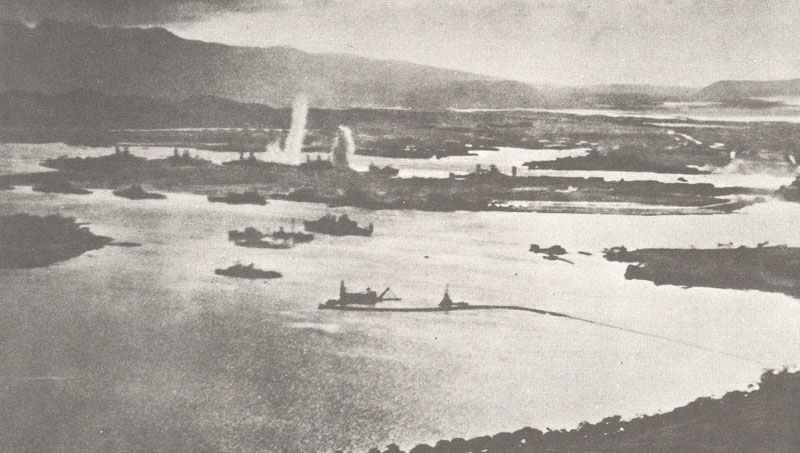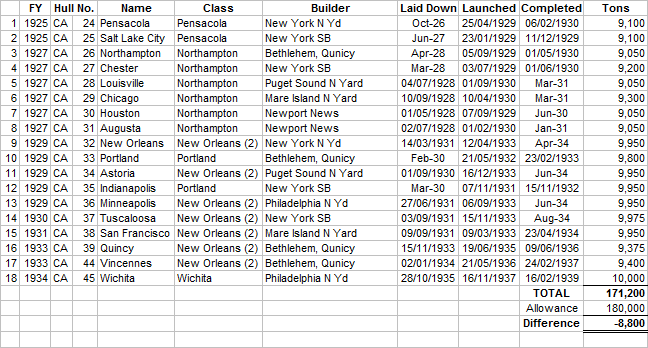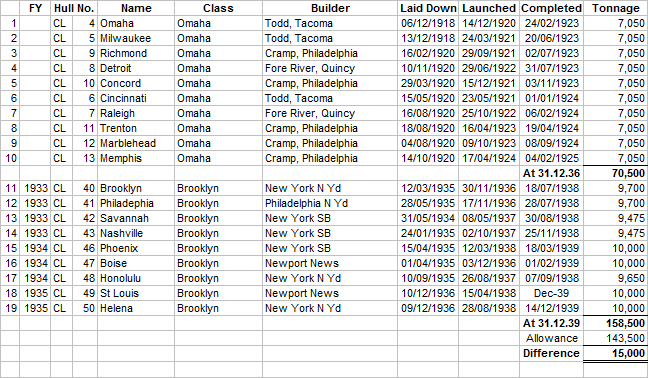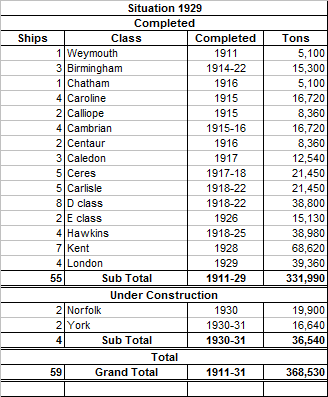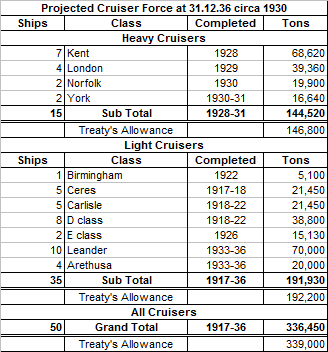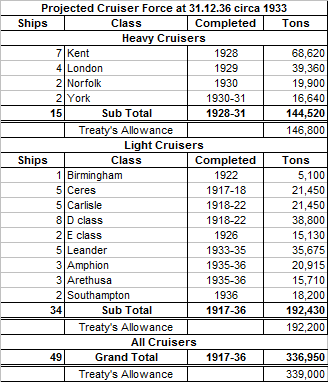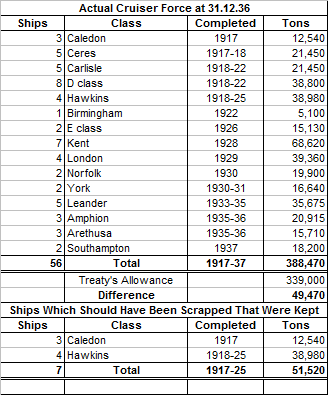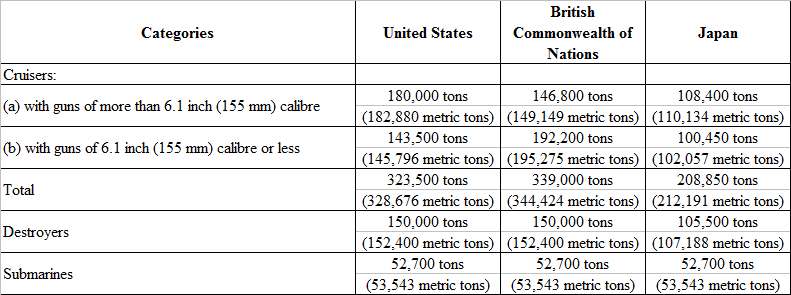This is a spinoff from this topic which brought up some fascinating facts and figures for the major interwar navies
I wanted to explore a wider period re the USN. One of the common themes is the very anemic post WNT US naval construction in the 1920s and early 1930s. Here is a very interesting article putting more light on the subject:
So what if they build more interwar? I am thinking of at least more even handed replies to the IN 1923 and 1927 shipbuilding programs. For instance in reply to the 1923 IJN plan the 1924 USN program might add in adition to the CAs and gunboats the 12 DDs and 6 subs left over from the 1916 appropriations, and perhaps a handful of auxiliaries too. I have read in Friedman's that USN wanted some destroyer leaders at this time, so perhaps the DDs could be updated version of the 1919 2100 tons DD leader design. Also shipyards that went under at this time such as Bath and Cramp could be saved from bankrupcy if they receive contracts for a handful of CAs or DDs.
Also the CAs could be laid down earlier say 1925 to 1927, matching well the IJN CA construction.
In reply to the IJN 1927 program, perhaps the OTL cruiser bill of 1929 can be brought forward to 1928, and also include some DDs of new design (such as say a dozen or more of pre-Farraguts or updated leaders), subs, a few auxiliaries etc. The LNT will upset the plans of course, perhaps they won't be able to build the OTL Porter DDs if they have large leaders already built. It possibly may affect the post LNT DD building numbers, not sure, if they build or planned 24-30 or so DDs before the LNT in this scenario.
Next, in reply to the 1931 Maru 1 keikaku IJN program, the so called USN NIRA program can be brought up to 1932. I know it's depression and stuff, it may or may not be feasible to bring it up a year forward. Ideally the Brooklyns should be brought forward too, since more CAs were built earlier.
So my reasoning is if they are significantly closer to treaty limits at it's expiry in 1937 then the shipyards would not be quite so crowded (and perhaps in better shape) to allow earlier building of the BBs, as well as the ships of the Second Vinson act of 1938. As a comparison the british were having no less than 5 BBs laid down in 1937, plus the 4 Illustrious also in 1937, plus they were building loads of cruisers as well. In comparison the US managed a measly 1 BB in 1937, 1 in 1938, 3 BB and one CV in 1939 etc. and not a single CV in 1940, just 3 BBs.
If for instance they laid down 2 BB each in 1937, 1938, and 1939, and the two Vinson carriers in 1939, then their situation in early 1942 would be quite a lot better with 4 modern BBs not 2 and one extra CV. Possibly a few more modern cruisers such as Atlantas or Clevelands and some more modern DDs and subs? Oh and of course more naval planes for the extra CVs, and in general. Plus perhaps a few more CVEs?
This then gets to something i'm very curious about, namely how close was the USN in underage tonnage for cruisers, DDs, subs etc in 1941 compared to what they were supposed to have according to the expanded navy of the 1938 Vinson act (not counting the Two-Ocean Navy provisions or even the month earlier 11% increase, as they wouldn't have made a difference for late 1941 i believe). Presumably all the Clemsons were overage at this time, and most of the Omahas.
I wanted to explore a wider period re the USN. One of the common themes is the very anemic post WNT US naval construction in the 1920s and early 1930s. Here is a very interesting article putting more light on the subject:
So what if they build more interwar? I am thinking of at least more even handed replies to the IN 1923 and 1927 shipbuilding programs. For instance in reply to the 1923 IJN plan the 1924 USN program might add in adition to the CAs and gunboats the 12 DDs and 6 subs left over from the 1916 appropriations, and perhaps a handful of auxiliaries too. I have read in Friedman's that USN wanted some destroyer leaders at this time, so perhaps the DDs could be updated version of the 1919 2100 tons DD leader design. Also shipyards that went under at this time such as Bath and Cramp could be saved from bankrupcy if they receive contracts for a handful of CAs or DDs.
Also the CAs could be laid down earlier say 1925 to 1927, matching well the IJN CA construction.
In reply to the IJN 1927 program, perhaps the OTL cruiser bill of 1929 can be brought forward to 1928, and also include some DDs of new design (such as say a dozen or more of pre-Farraguts or updated leaders), subs, a few auxiliaries etc. The LNT will upset the plans of course, perhaps they won't be able to build the OTL Porter DDs if they have large leaders already built. It possibly may affect the post LNT DD building numbers, not sure, if they build or planned 24-30 or so DDs before the LNT in this scenario.
Next, in reply to the 1931 Maru 1 keikaku IJN program, the so called USN NIRA program can be brought up to 1932. I know it's depression and stuff, it may or may not be feasible to bring it up a year forward. Ideally the Brooklyns should be brought forward too, since more CAs were built earlier.
So my reasoning is if they are significantly closer to treaty limits at it's expiry in 1937 then the shipyards would not be quite so crowded (and perhaps in better shape) to allow earlier building of the BBs, as well as the ships of the Second Vinson act of 1938. As a comparison the british were having no less than 5 BBs laid down in 1937, plus the 4 Illustrious also in 1937, plus they were building loads of cruisers as well. In comparison the US managed a measly 1 BB in 1937, 1 in 1938, 3 BB and one CV in 1939 etc. and not a single CV in 1940, just 3 BBs.
If for instance they laid down 2 BB each in 1937, 1938, and 1939, and the two Vinson carriers in 1939, then their situation in early 1942 would be quite a lot better with 4 modern BBs not 2 and one extra CV. Possibly a few more modern cruisers such as Atlantas or Clevelands and some more modern DDs and subs? Oh and of course more naval planes for the extra CVs, and in general. Plus perhaps a few more CVEs?
This then gets to something i'm very curious about, namely how close was the USN in underage tonnage for cruisers, DDs, subs etc in 1941 compared to what they were supposed to have according to the expanded navy of the 1938 Vinson act (not counting the Two-Ocean Navy provisions or even the month earlier 11% increase, as they wouldn't have made a difference for late 1941 i believe). Presumably all the Clemsons were overage at this time, and most of the Omahas.
Last edited:

